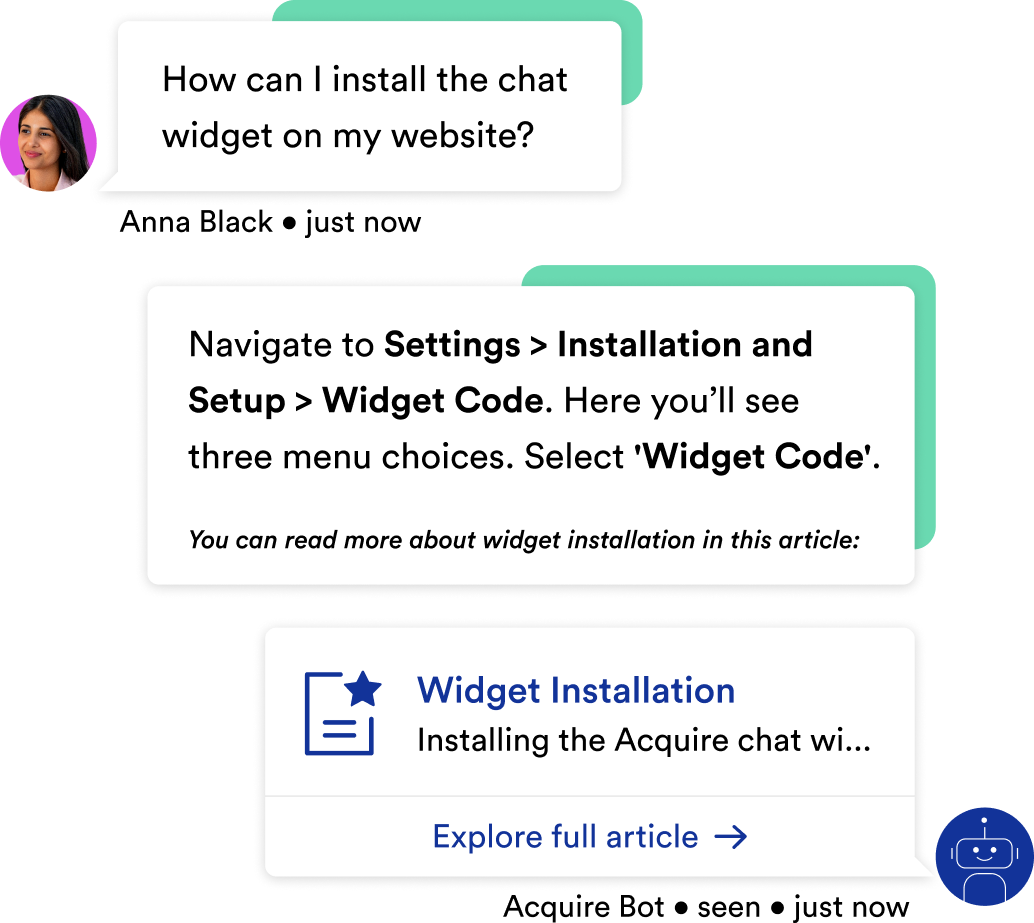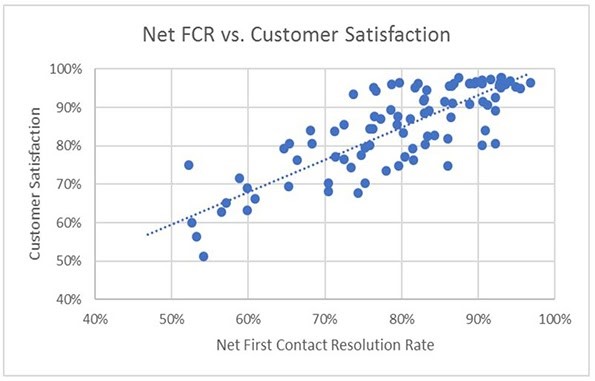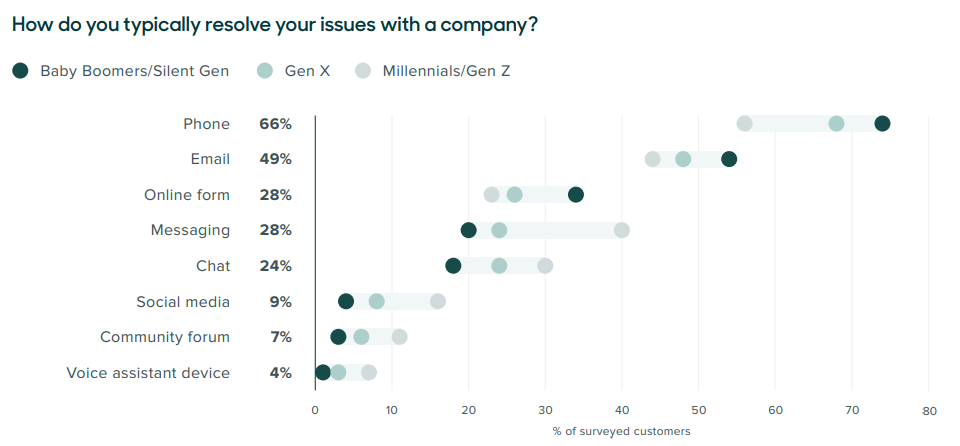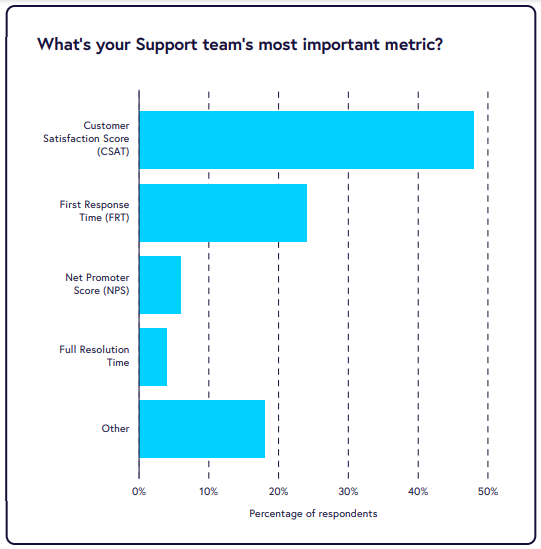Measuring customer satisfaction and related indicators have been a part of corporate success since time immemorial. A purported Soviet spy, Harold Ware, talked about it in as far back as the Soviet Union of the 1950s. The Net Promoter Score, which measures how inclined a consumer is to endorse a company to others, was established more recently by Fred Reichheld in this HBR article, pointing out that businesses frequently waste customer data that cannot be linked to profits or outcomes.
Tracking of customer service on an ongoing basis results in lower customer churn, greater loyalty, and a healthier bottom line. They even provide your support personnel with explicit guidance on what needs to happen and how their effectiveness will be evaluated. This can assist them in selecting the appropriate tactics, processes, and support tools to successfully and efficiently resolve the customer’s issue.
What are the most important KPIs for measuring customer service?
It is far more critical than ever before for customer support personnel to understand how they are faring in comparison to the expectations of their consumers. Every customer support team must closely monitor certain KPIs. Here, we will take a look at an assortment of seven such metrics that measure everything from the performance of your customer support employees to the success rate of their interactions.
1. Ticket Volume
Goal: Average ticket volume is the average amount of customer support tickets received by your team.
How to measure: [Sum of all (#) tickets] = (#) Ticket Volume
“The ticket volume analysis provides a general pulse to the health of your support organization and product.”
– Luis Hernandez, VP of Customer Success at Geckoboard
Begin tracking ticket volume to get an all-around perspective of your customer support team’s workload. In addition to measuring your workload, you can also identify patterns to predict when there will be a spike in conversations.
This overview assists you in two ways. First, you can effectively manage personnel needs by anticipating when you may want additional assistance. Second, observing it as a trend allows you to correlate ticket volume spikes on specific days to product issues or changes in order to understand what happened and devise strategies to stay ahead of such issues in the future.
Offer self-service as your frontlines
Agents can benefit from self-service content in ways other than simply assisting customers. Investing in a comprehensive knowledge base can be quite beneficial to your customer service team. You can also combine your knowledge base with a chatbot to answer frequently asked questions and offer fast access to relevant support articles.
2. Ticket Backlog
Goal: Ticket backlog lets you see customer support tickets that have gone unaddressed over a specific period.
How to measure: [Sum of unresolved tickets open longer than (#) days] = (#) Ticket backlog
To calculate ticket backlog, you must first understand your normal ticket resolution period. Whether this runs up to the order of a few hours or days, you’ll want to add up any unresolved tickets that have been open for more than this amount of time.
You should also keep track of how long the longest backlogged ticket has been left unanswered. To determine this duration, take the difference of the ticket open date from today’s date to find out the number of days open.
Today’s date – ticket open date = (#) Days longest backlogged ticket has been open
Set up reminders for lingering tickets
Have your CS team remain on top of unanswered inquiries by postponing a chat for a set amount of time. When the timer goes off, have them check up on the ticket or contact your product team. While your support team may not be able to provide resolutions at all hours, they can keep lines of communication open and enable resolutions as soon as they have time.
3. Average First Response Time
Goal: Average first response time indicates the time it takes for a customer to receive an initial response to their support request.
How to measure: (Sum of first response times) / (# of tickets) = Average first response time

Source: Business2Community
As per a report by Forrester, 77% of consumers say that the most essential thing a business can do to offer a stellar customer experience is to value their time. The importance of first impressions cannot be overstated. Good customer support teams excel in replying to clients as soon as possible. Even if you are unable to address a ticket, send a quick reply acknowledging their message to allay their anxiety of an unknown wait time.
Use live chat to provide real-time support

Source: Acquire
Employ live chat to allow real-time communication and train your CS team to send an initial response to clients acknowledging that you have received their query and will be in touch shortly. You can also integrate live chat with your knowledge base to offer automated assistance, capture requests, and auto-suggest articles.
4. First Contact Resolution Rate
Goal: FCR calculates the percentage of total customer queries resolved at first contact.
How to measure: [# Issues resolved on first contact] ÷ [Total no. of issues] X 100 = Gross FCR
The FCR rate is a valuable metric for tracking efficiency and how efficiently your customer service team replies to inquiries. As a result, it can be a useful indicator of customer satisfaction because consumers who spend less time resolving difficulties are happier.

Source: HDI
An increasing FCR rate also improves contact center efficiency as it necessitates the employ of fewer support agents to handle the same number of unique customer queries. Furthermore, enhancing FCR directly improves customer happiness, according to an SQM Group study, which found that a 1% improvement in FCR leads to a 1% rise in customer satisfaction.
Automate proven replies with a chatbot
Create a library of answers to typical inquiries and use a chatbot to automate them. Try out different things to see what works best for your customers. Ideally, the bulk of your automatic responses will result in the resolution of a ticket.
5. Average Handle Time
Goal: Average handle time determines the time it takes an agent to reply to a single query.
How to measure: [Talk time + hold time + follow-up time] / [Total no. of calls] = AHT
The average handle time is used to examine the effectiveness of agents and the whole customer support team. According to research, 66% of customers often address their issues with a company over the phone, making AHT a vital KPI to monitor.

Source: Zendesk
If not handled correctly, average handle time might be a deceptive metric. Quick average handling times can be detrimental if your support agents are merely attempting to complete calls as quickly as possible without thoroughly resolving concerns. While it is important to close ticket requests as soon as possible, you should not sacrifice quality for speed.
Provide an internal self-service resource
Make your knowledge base a central hub for your support representatives. You can also integrate your knowledge base with your inbox so that your customer service personnel can quickly discover answers to queries they may have.
6. Preferred Communication Channel
Goal: It tells you which channels of communication your customers prefer to communicate with your business. (for this, there are many business management tools).
How to measure: Pay attention to all your customer communication channels and single out the ones with the highest engagement.
This is an operational customer support metric that notifies you of your clients’ preferred channels of support. According to eConsultancy, US consumers prefer the following methods for help: live chat (73%), email (61%), phone support (44%), social media (48%), and SMS (41 percent ).

Source: eConsultancy
However, this rate fluctuates depending on the nature of your business. As such, you must track how your clients reach you and then enhance those channels to provide a better service experience.
Optimize Communication Channels
After you’ve determined your clients’ preferred communication channel, make sure to enhance it by designating more people to it and implementing processes to ensure that tickets are serviced in a timely manner. For instance, if a proportionately higher number of customers reach you via phone, it’d be better to set up features like call routing, auto-attendant, and IVR to make sure that customer issues are resolved quickly.
7. Customer Satisfaction Score (CSAT)
Goal: How to measure: CSAT (%) = [(# Positive responses) ÷ (Total no. of responses)] * 100

Source: Geckoboard
A CSAT score generally depicts the client’s support experience after requesting them to rank it on a spectrum of good to bad. According to a recent Geckoboard report, CSAT is a true determinant of how satisfied clients are with the support they have received and is also the most popular metric among 48% of support leaders.
To determine consumer satisfaction, utilize a combination of surveys and fast feedback evaluations and then compare them to industry standards. For instance, according to The American Customer Service Index, the average CSAT rating in the online retail industry is 82% while it is 64% for the internet service provider industry.
Get more survey participants
If you can get more clients to fill out the survey, you may be able to increase your CSAT score without putting in too much work. Angry consumers are generally the most vocal. Encourage satisfied clients to undertake the survey in order to obtain a more balanced score.
Conclusion
Monitor both short-term and long-term customer satisfaction and happiness in the aforementioned areas to assess the effectiveness of each metric and identify opportunities for improvement. Examine the satisfaction levels for support conversations and use the metrics described above to assess both the quantitative and qualitative parts of customer service while always keeping the goal of enhancing your customer relationships in the back of your mind.



